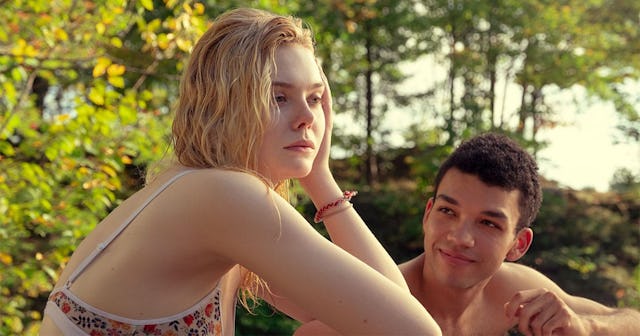What To Know Before You Watch Netflix's ‘All The Bright Places’

Trigger warning: suicide, mental illness
As someone who has spent most of their life struggling with mental illness, I found All The Bright Places on Netflix difficult to watch, while also feeling very seen. The narrative is bookended with suicide. The first scene introduces viewers to high school student Violet Markey as she is standing on the ledge of the same bridge where she lost her sister to a car accident. She is very clearly staring down at the street, contemplating her life. It is at that moment Theodore Fitch, a classmate and outcast, happens to be jogging along that same overpass. He climbs up on the ledge with her, and encourages her to step back.
This ultimately begins what I can only describe as a wonderful, but also rocky, relationship between two characters struggling with mental illness. Theodore trying to pull Violet out of her depression that is focused primarily around the death of her sister, as Theodore’s own mental illness and traumatic past bubbles to the surface.
I will be honest; there were moments in this movie that needed to be shown. One of the refrains of Theodore is that “people don’t like messy.” He uses this to explain why people don’t understand him, why he is often referred to as the high school “freak,” and why he doesn’t openly discuss his childhood trauma.
Where Theodore made jokes or just remained silent, I told lies. When I was in high school, my father was incarcerated on a number of drug-related charges. My parents were divorced and I lived with my grandmother. People often asked me why, and I must have had a million lies, everything from my parents were on a church mission to they died in a car accident. Lies seemed easier than the truth, and I have to assume anyone living in the wake of a messy family can relate with lies, distractions, and silence. There were only a few people I felt comfortable discussing my true family situation with because just as Theodore said, “People don’t like messy.”
I think this theme right here was what I and anyone who has struggled with mental illness can relate to the most. So much of living with anxiety, depression, trauma, abandonment, death, all of it, is finding someplace to hide it inside yourself. People often talk about suffering in silence, but until you’ve woken up in the morning and slid into the happy, outgoing, confident version of yourself to keep others from knowing about your suffering, you have no idea what that actually looks like.
One of the more pivotal moments in All The Bright Places was when Theodore attends a support group for teenagers struggling with mental illness. People are beginning to speak, and then, running in late is Amanda, the popular, everything-is-working-out, attractive, carefree girl from school. She sits next to Theodore and the two share a glance, each surprised to see the other. But at the same time, Theodore seems to be more surprised, and yet it is clear that he feels comfort in knowing that even the most polished girl in his high school is struggling. Amanda tells the group that she’s attempted suicide twice and is bulimic.
That moment is what we need to see more of in movies, books, and TV. You do not know what a person is struggling with. Furthermore, if someone is struggling, we should live in a world where everyone can speak as openly about their mental illness as they might any illness without someone telling them to snap out of it, or pull it together, or treat them as if they are some outsider for genetics and life situations they have no control over.
If the topic of suicide is a trigger for you, I would not recommend this movie. It is a tearjerker. The acting is solid, but not amazing. And there are a few scenes that gave me pause, and not in a good way. As much as I want to like Theodore as a character, he often crossed the line from charming boy trying to get Violet’s attention to creepy stalker who refuses to take “no” for an answer.
But if you are looking for a narrative that will make you feel seen as someone suffering from mental illness, All The Bright Places does a pretty solid job. It pushes the understanding that mental illness is all around us, and we as a society need to accept that, and stop trying to force people to act as if it’s not a reality. And that, my friends, is something I’d love to see more of.
This article was originally published on